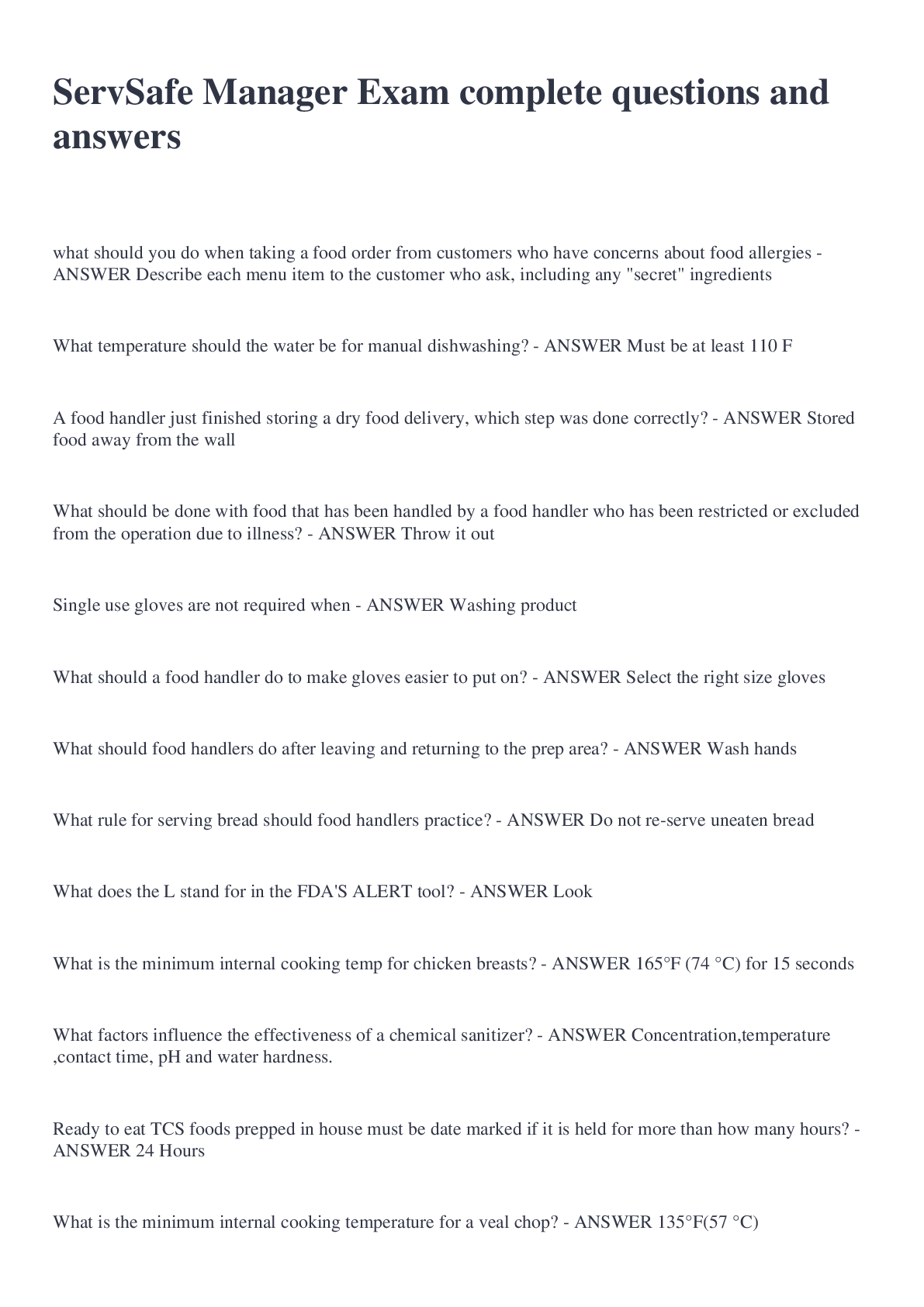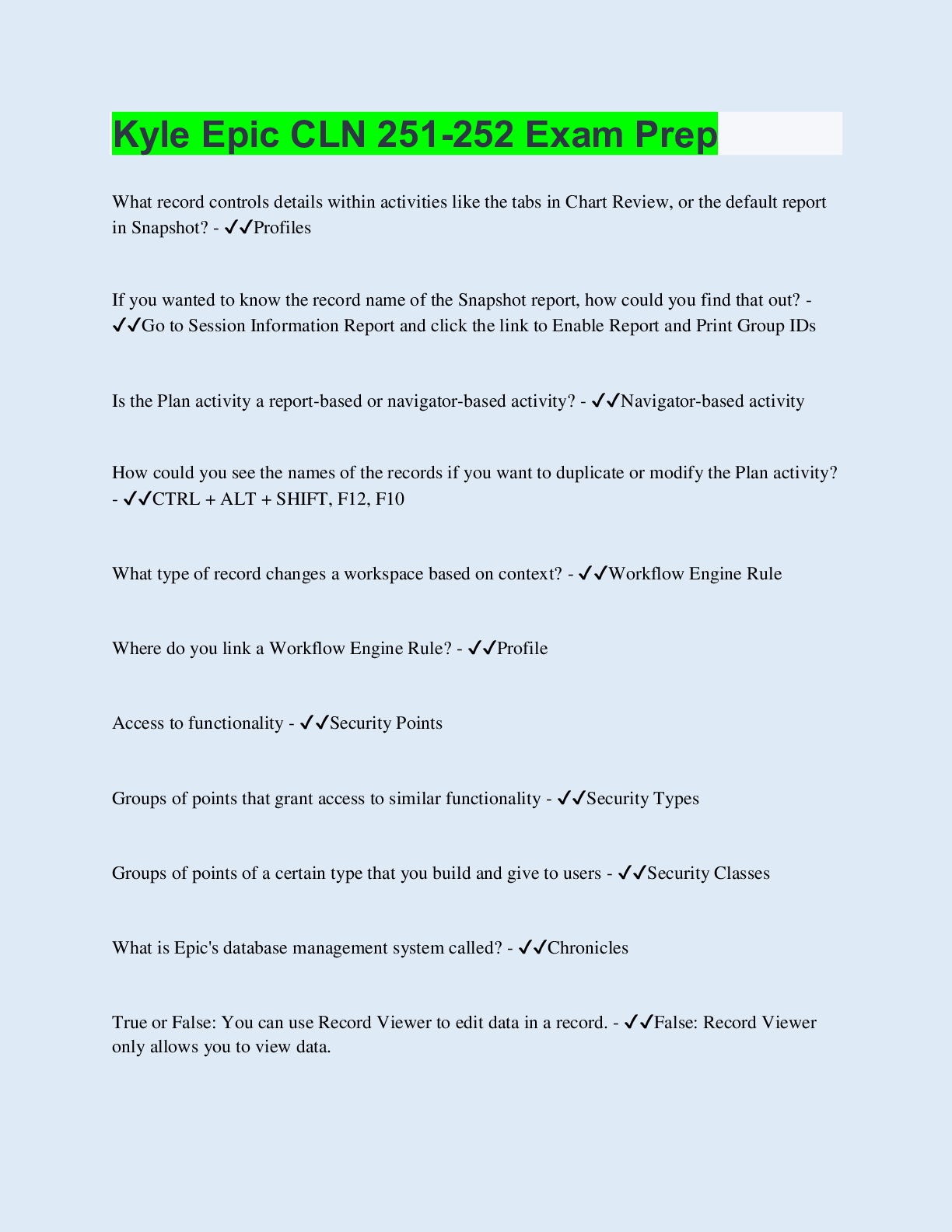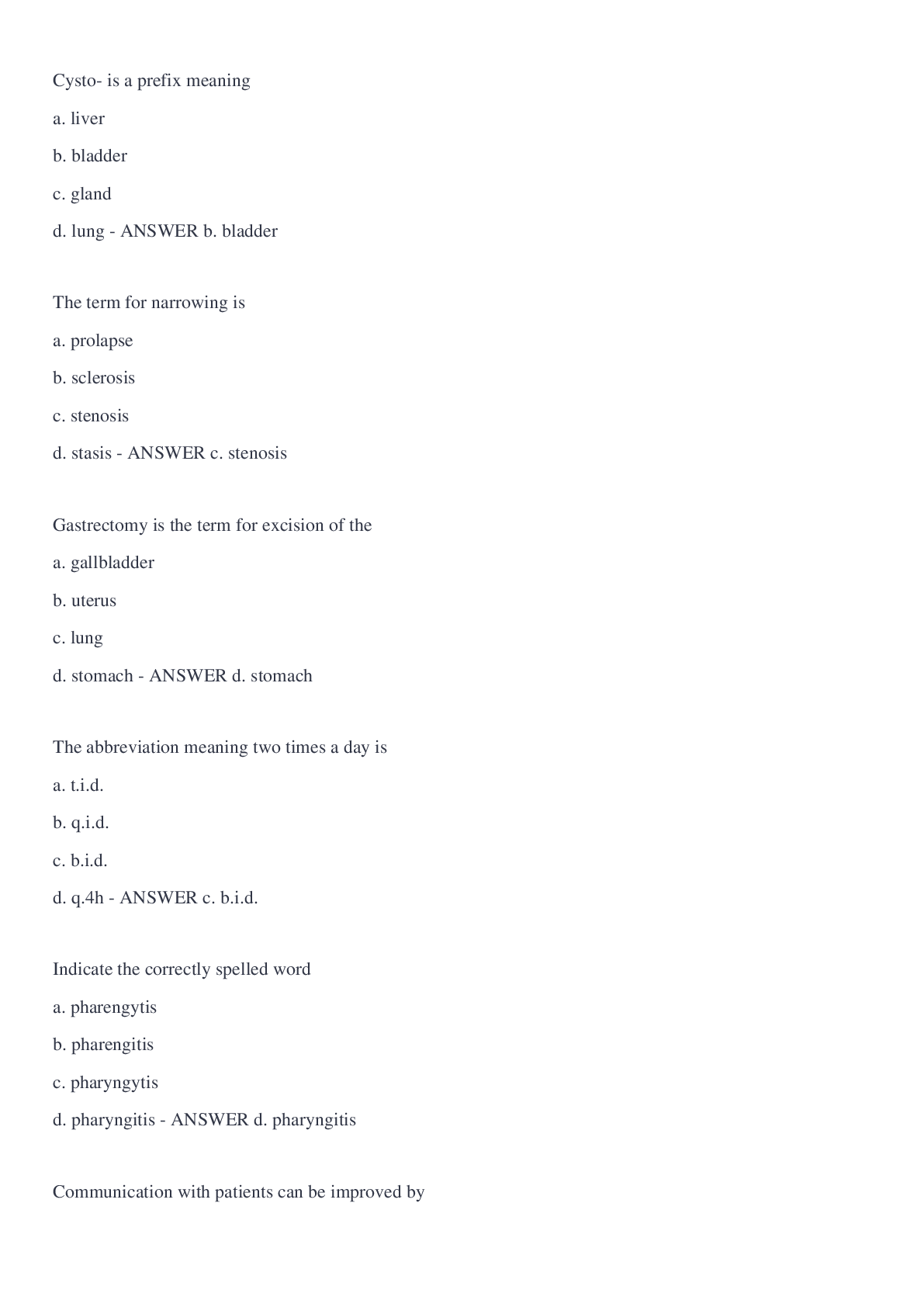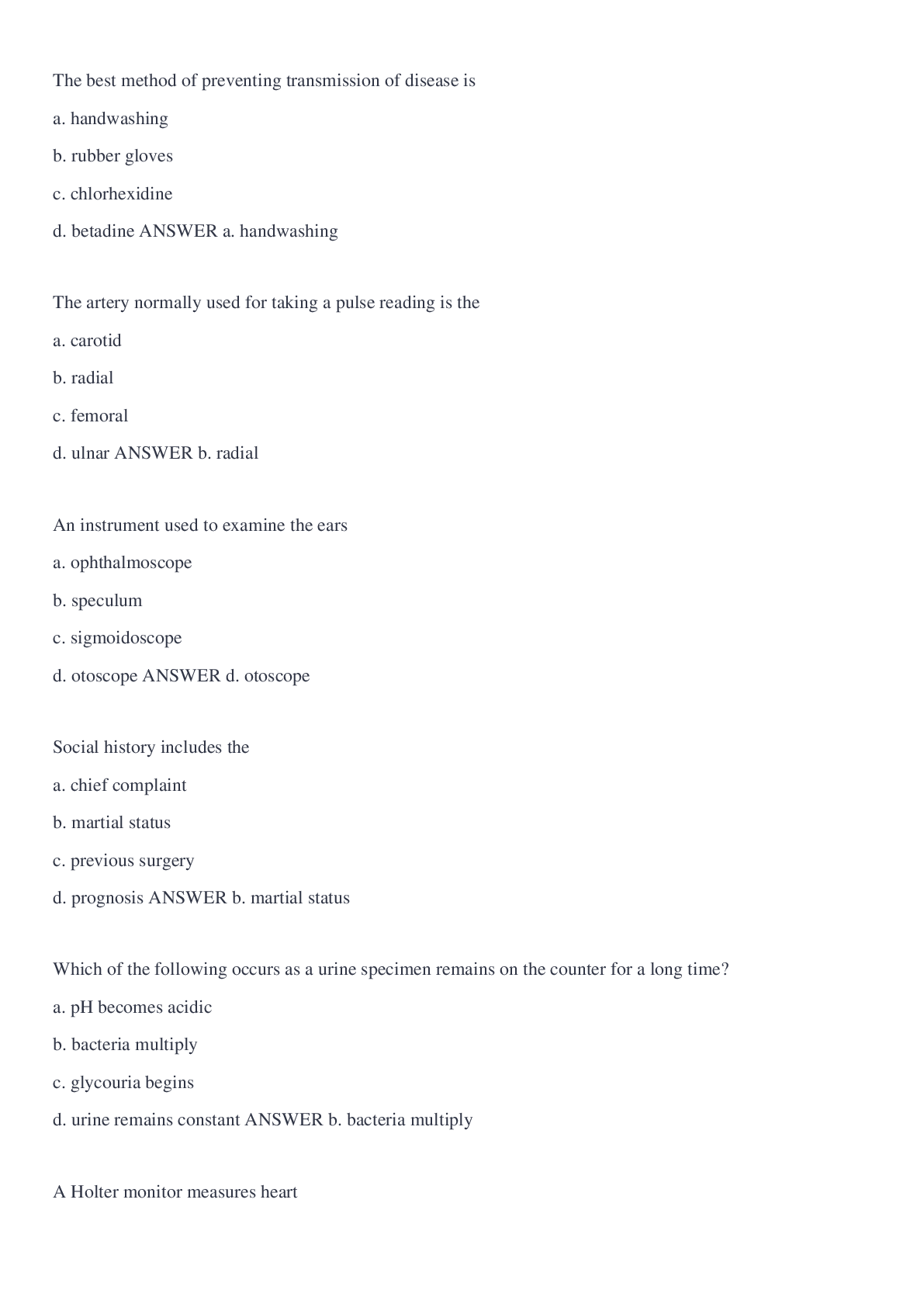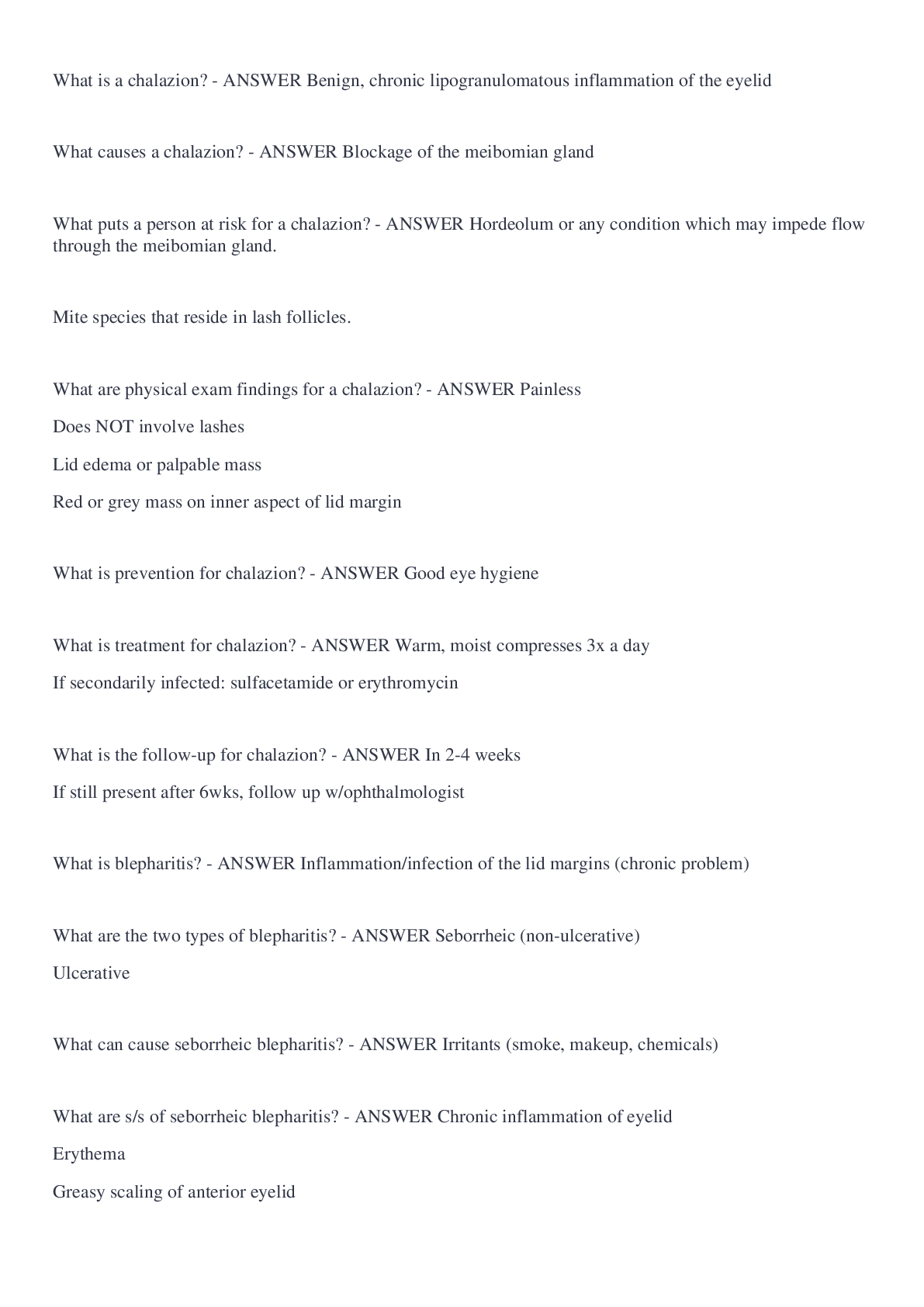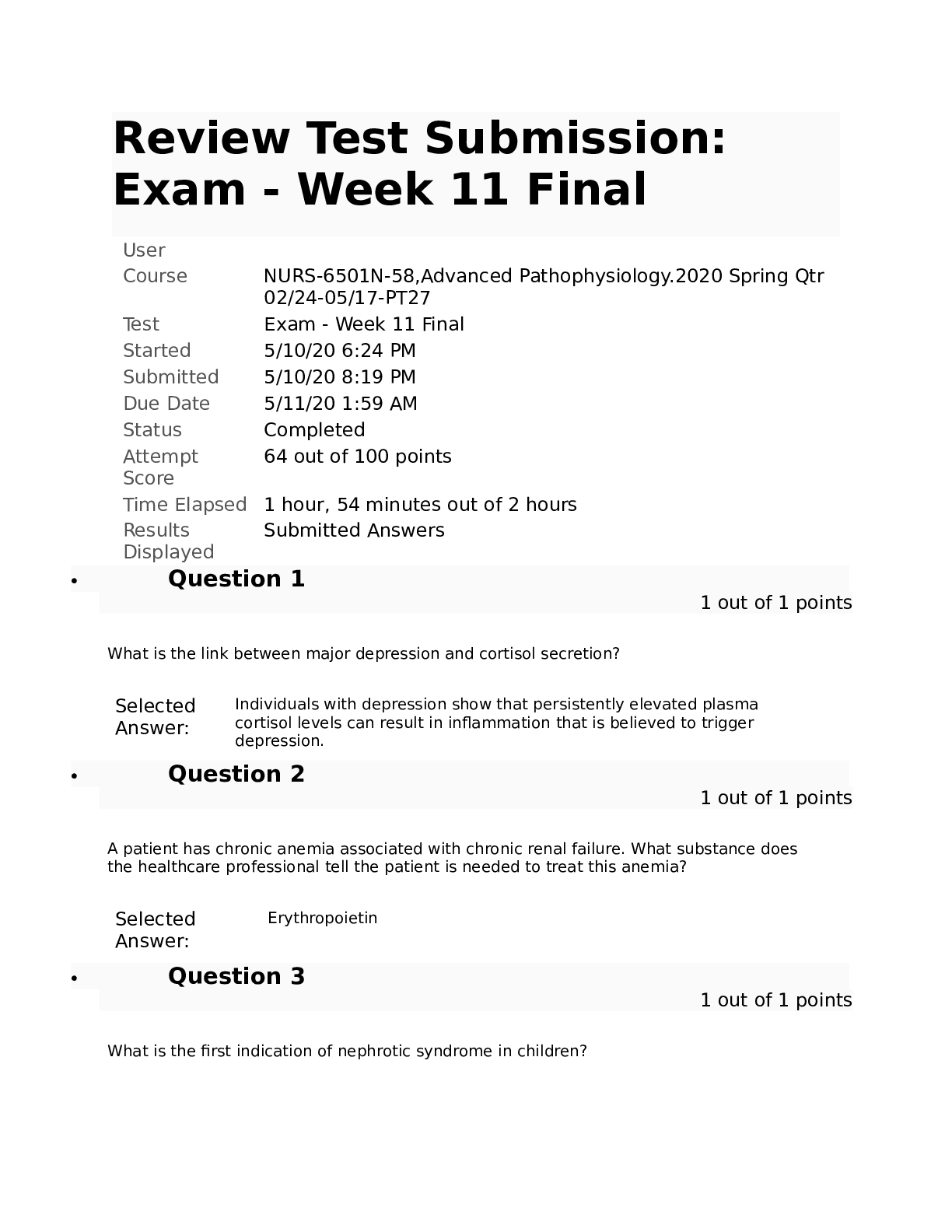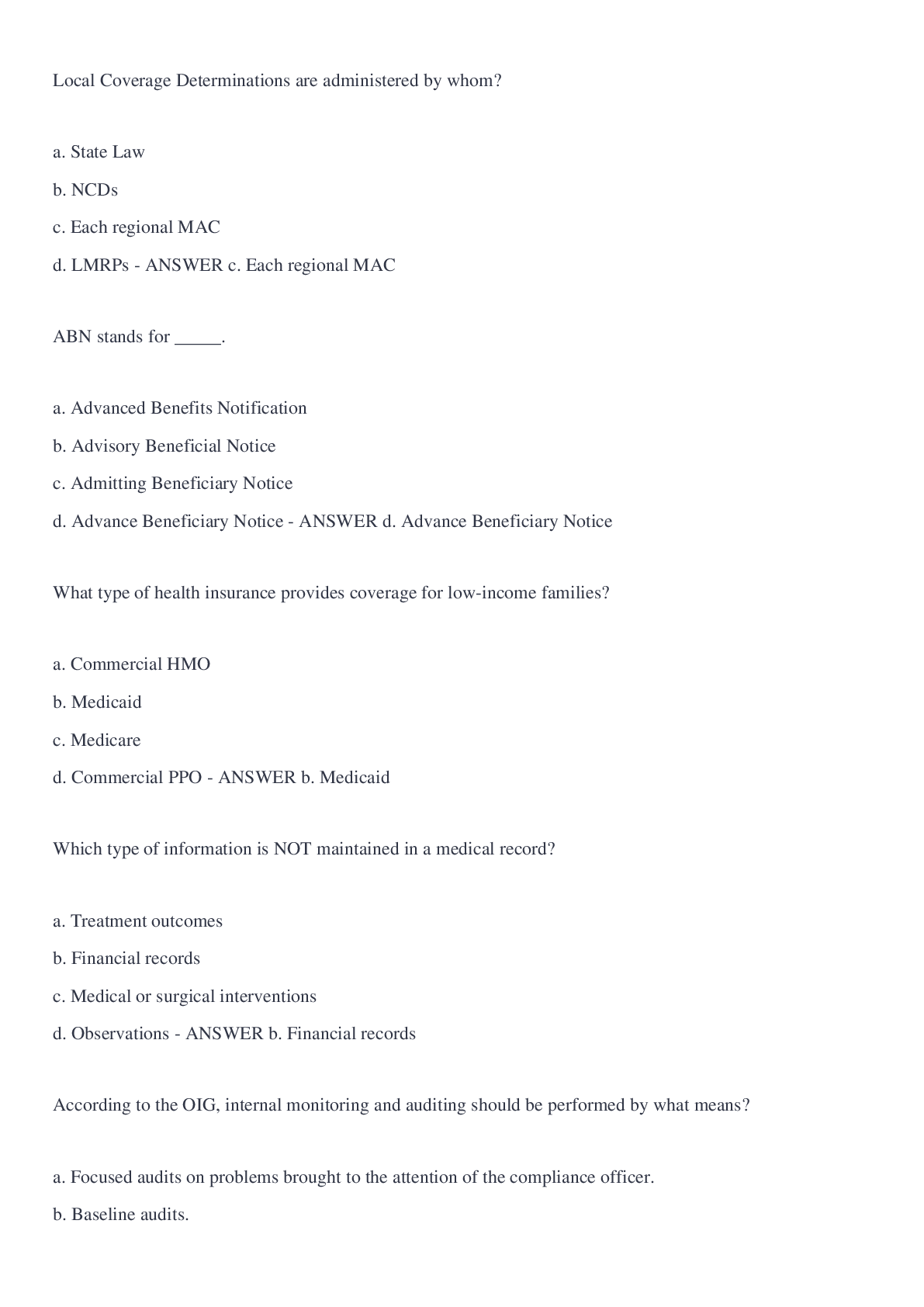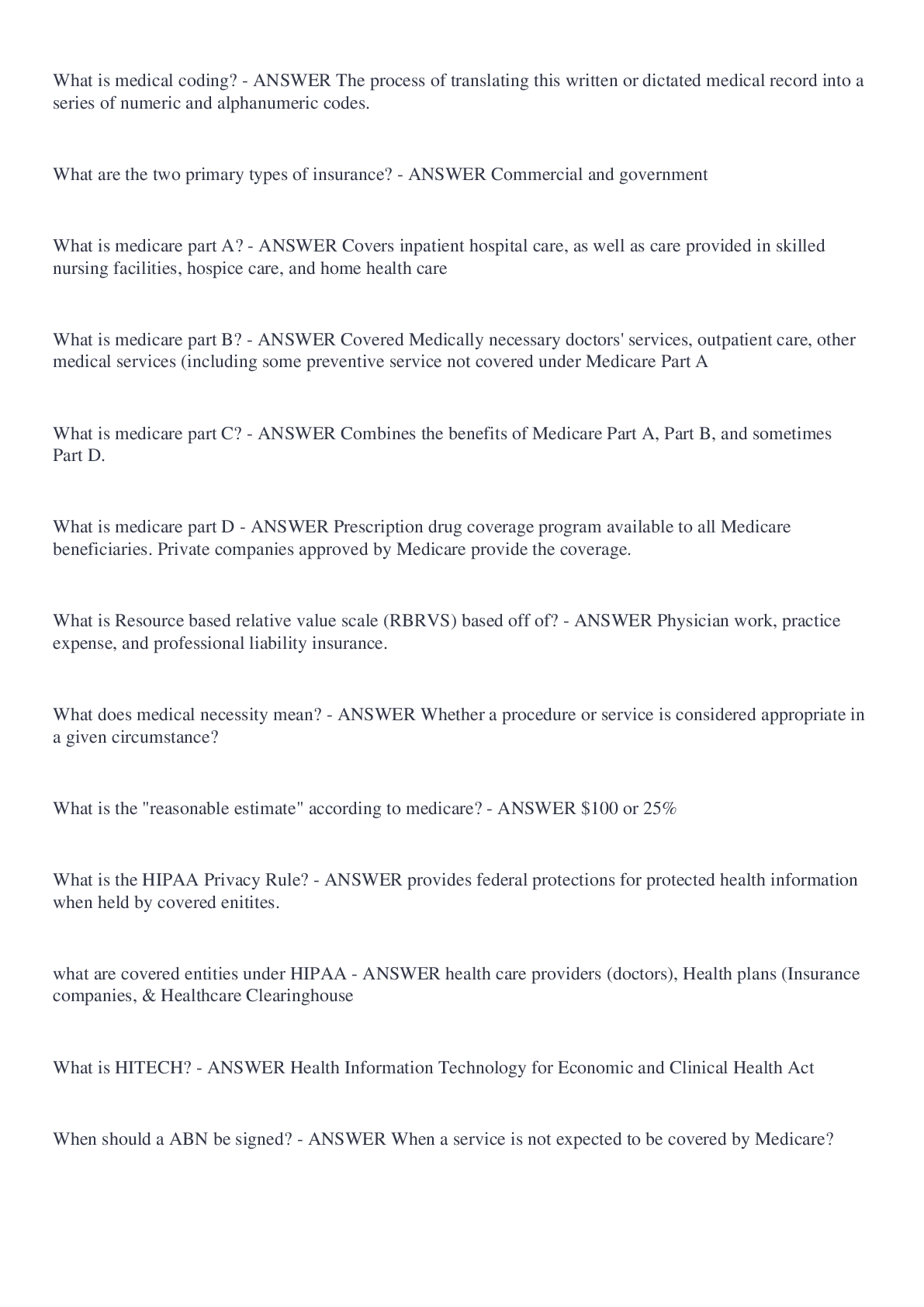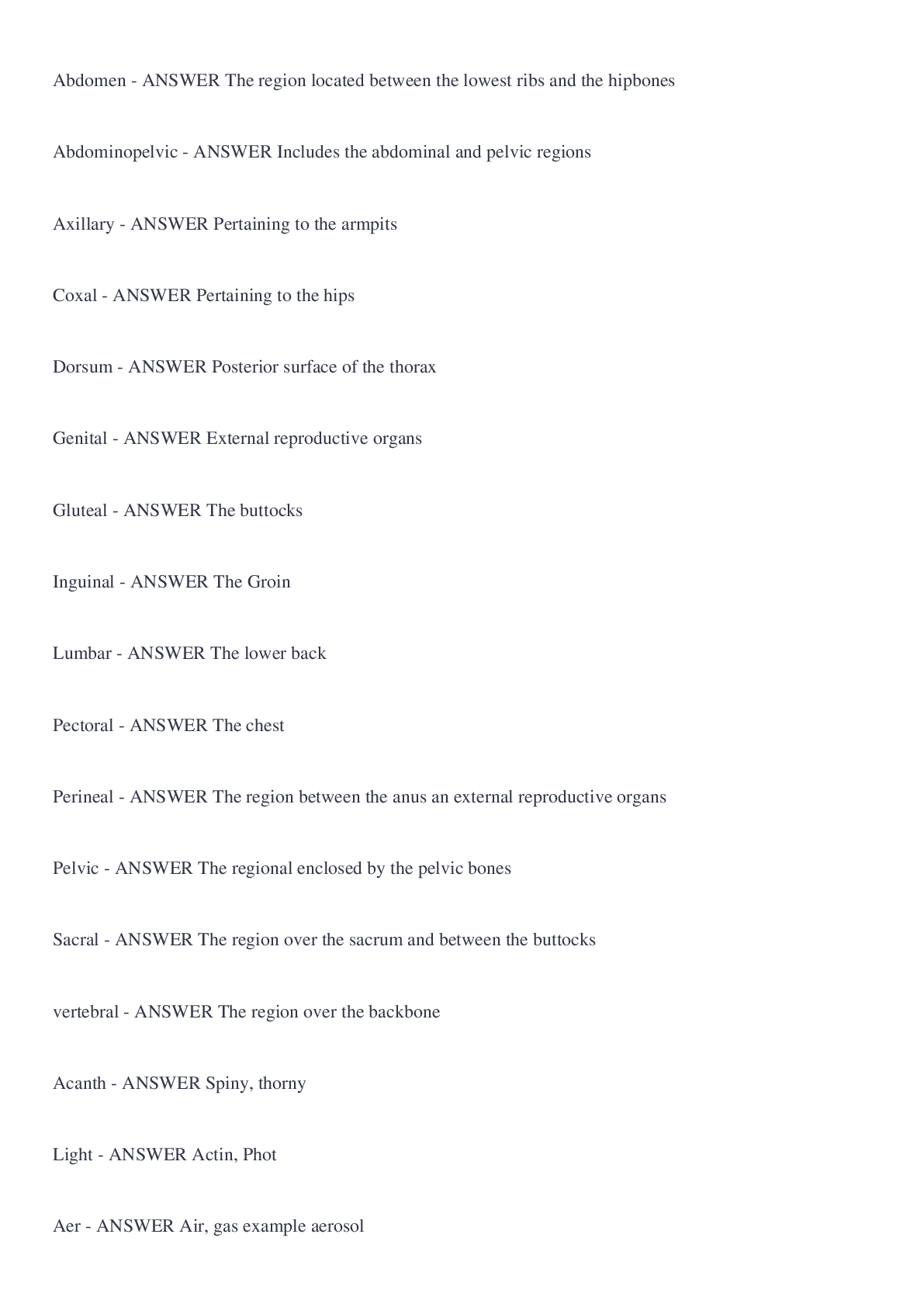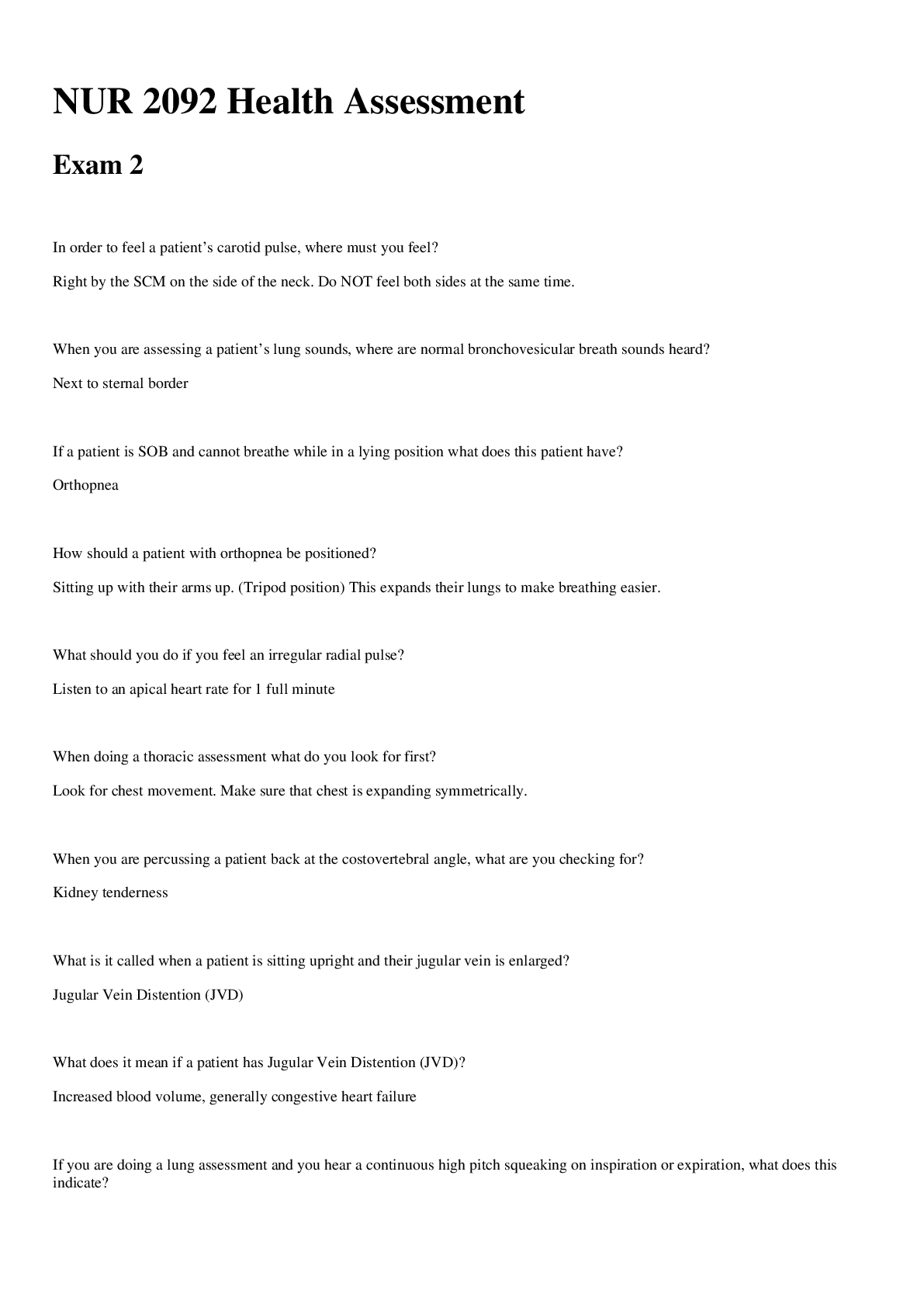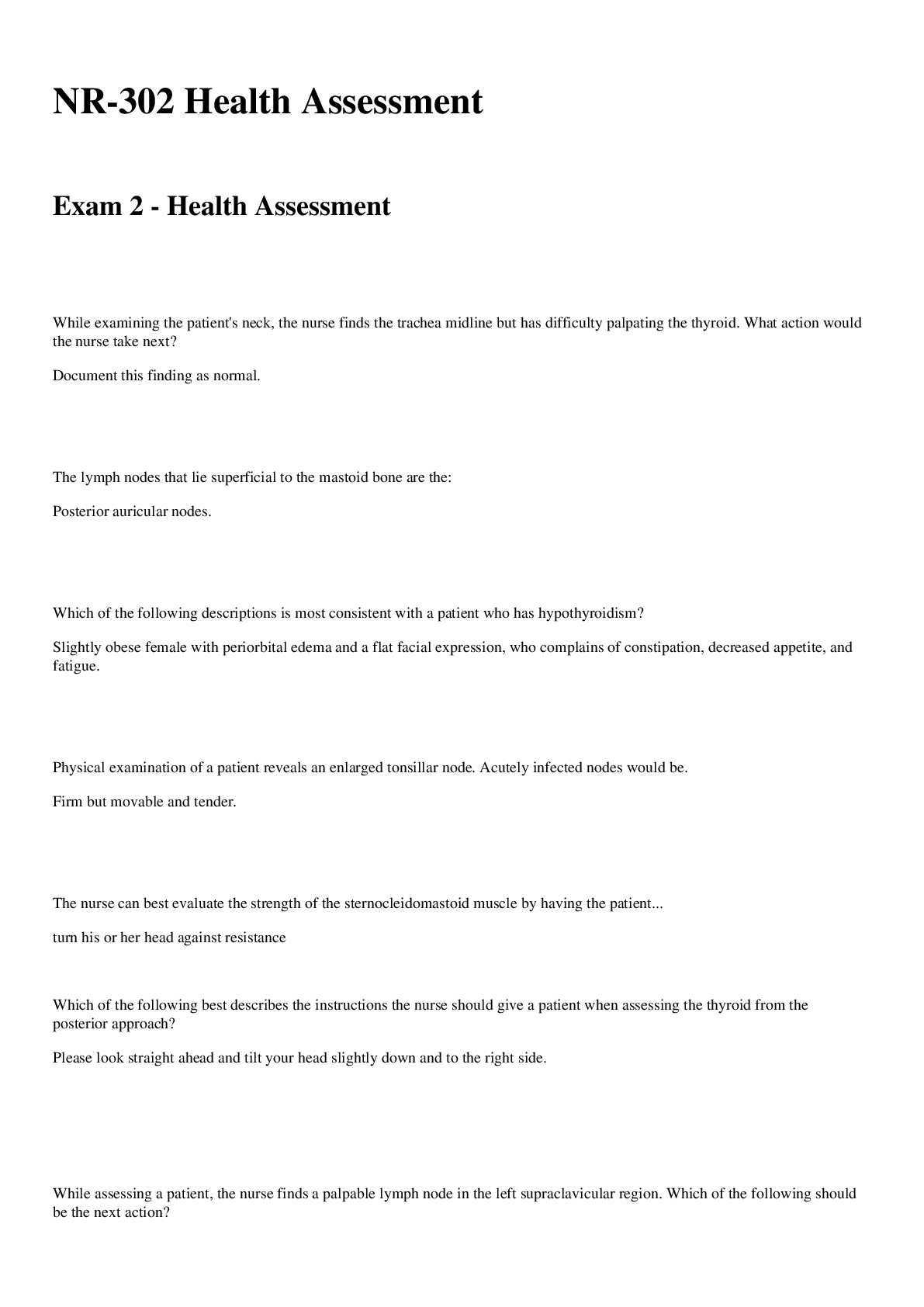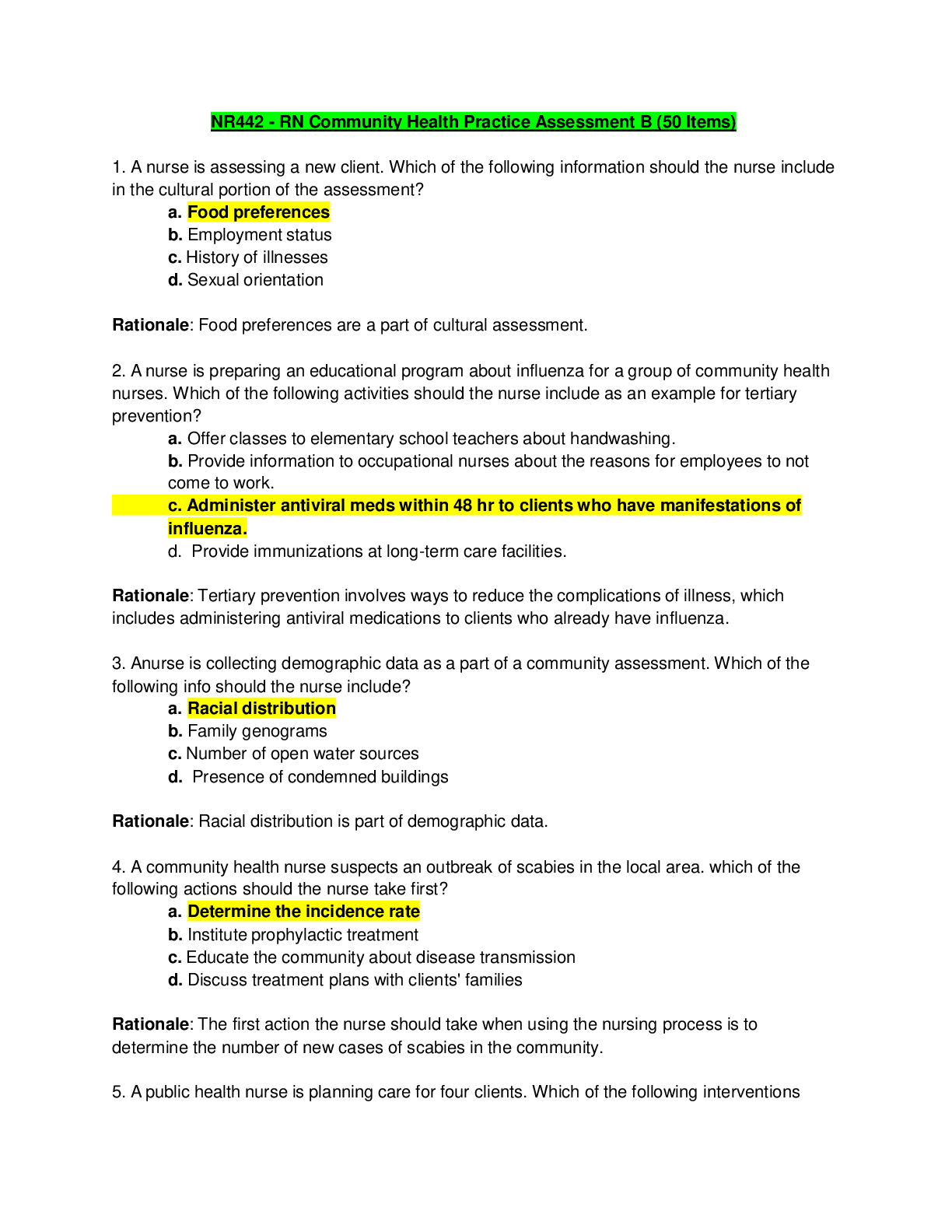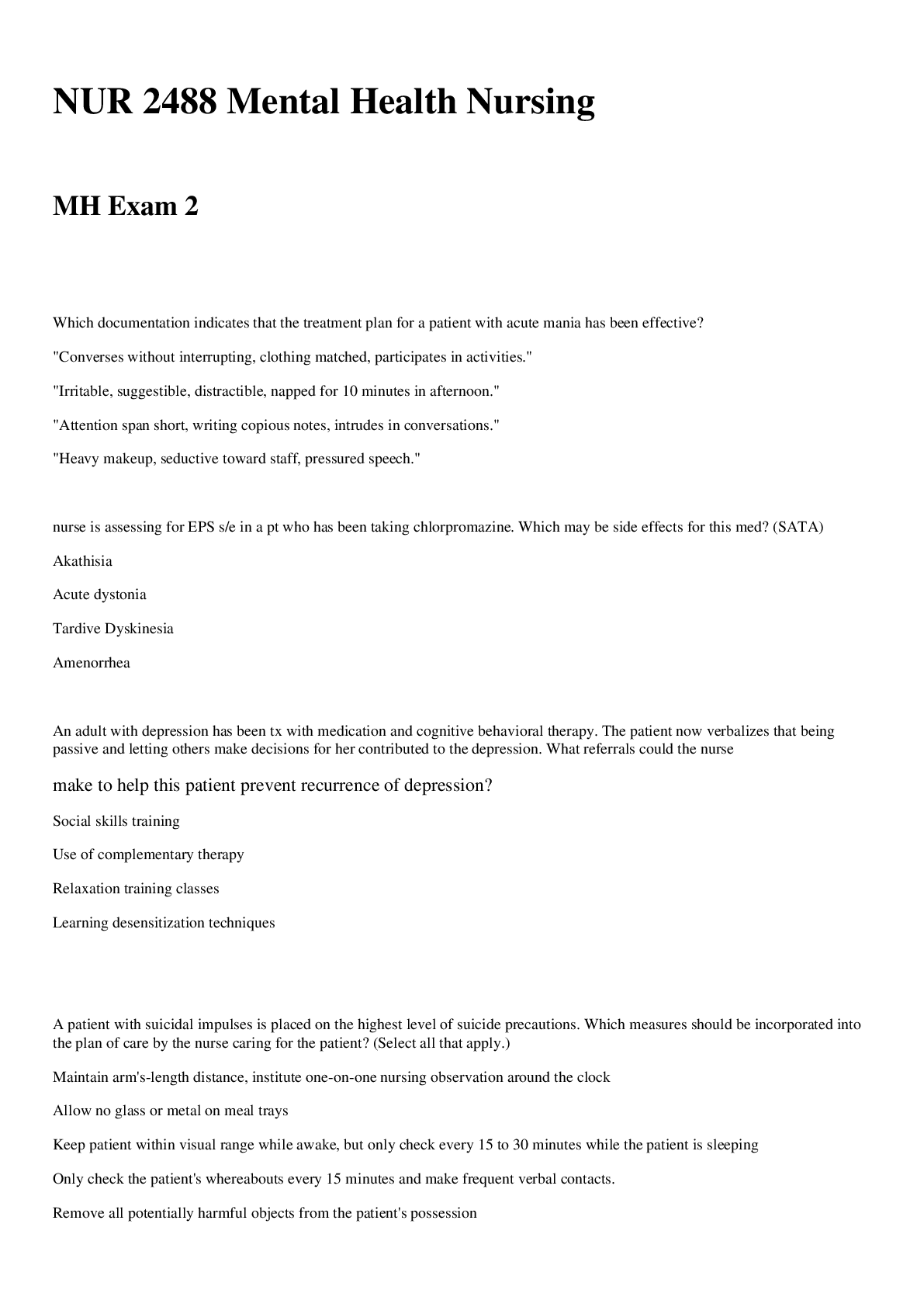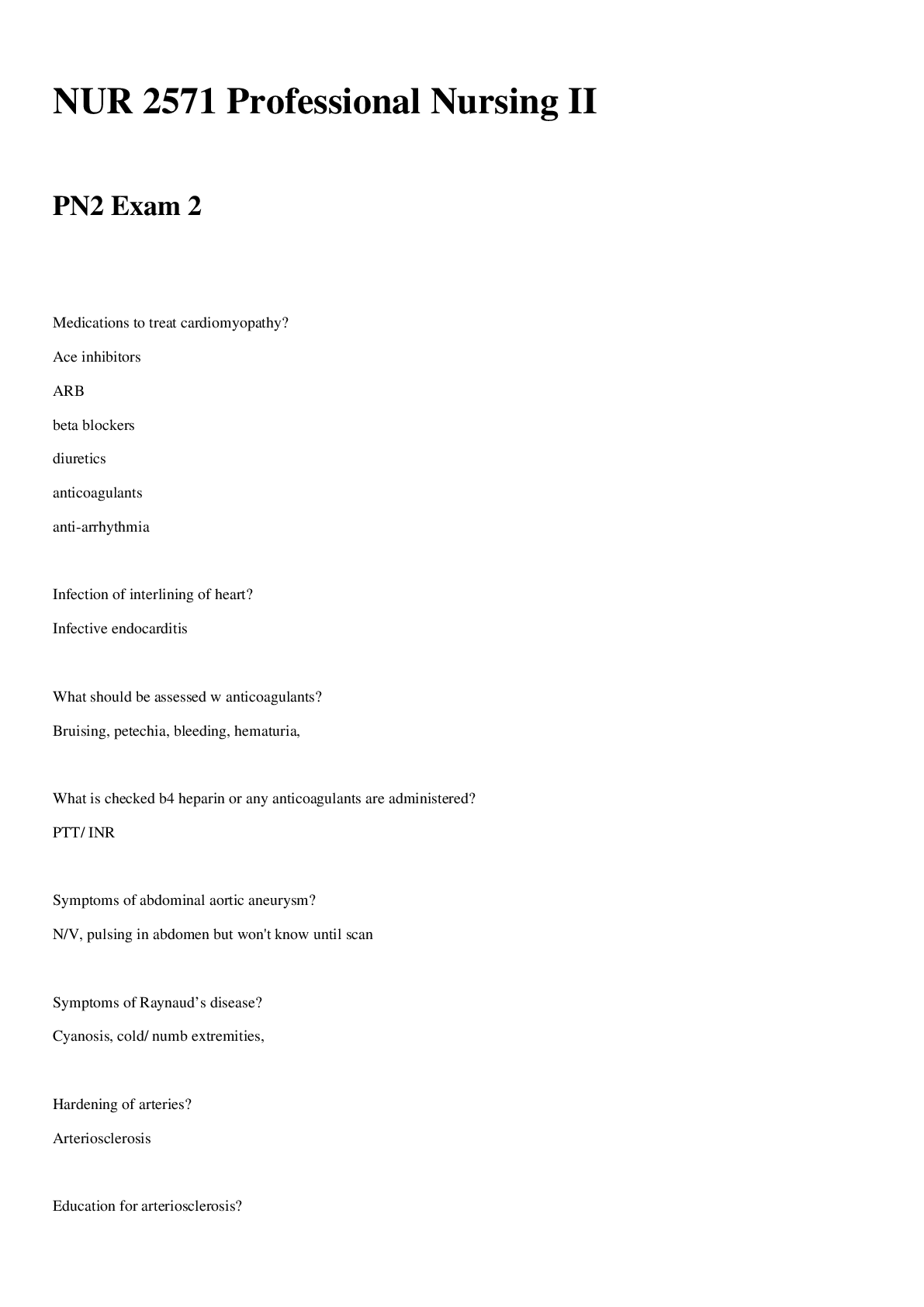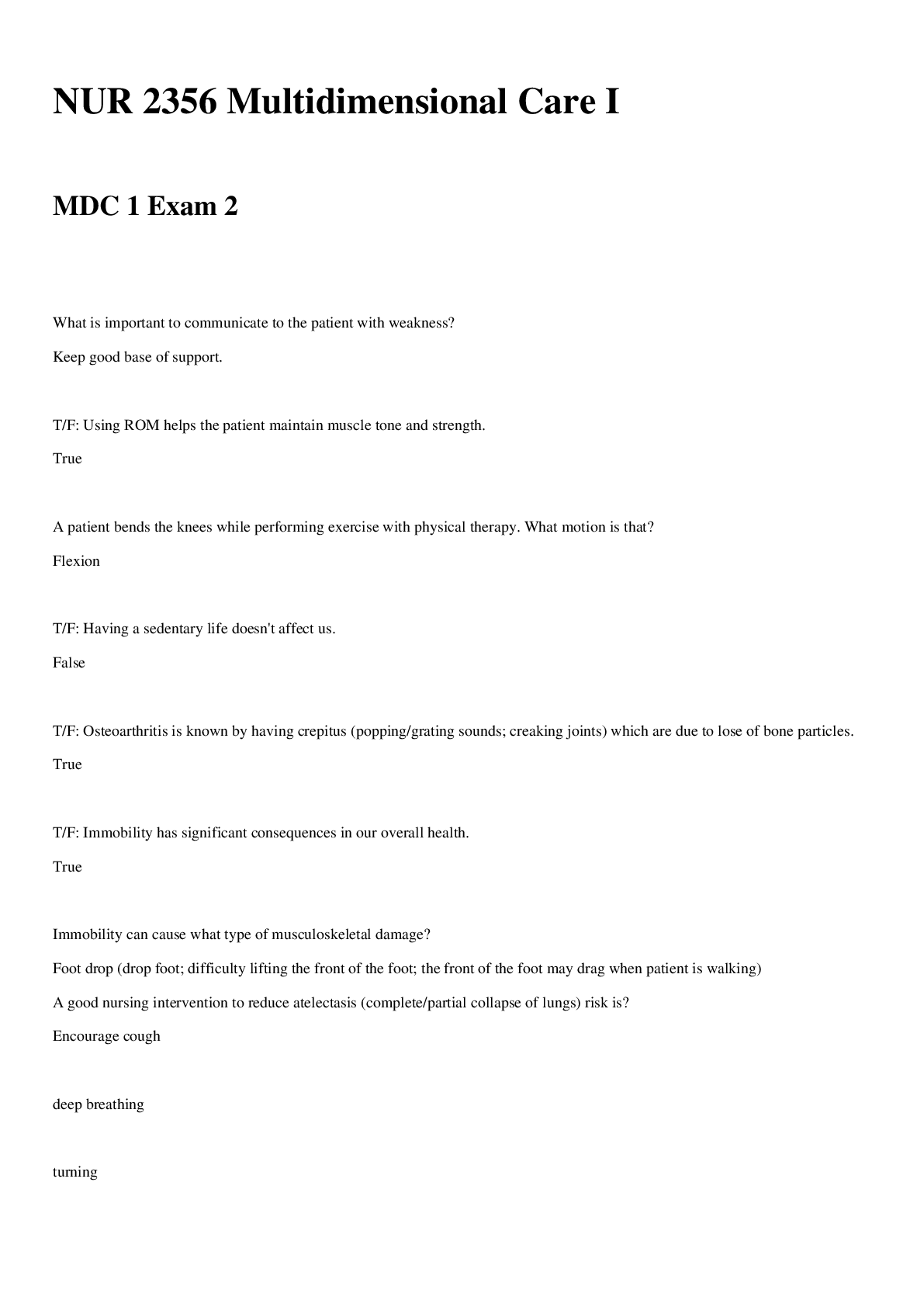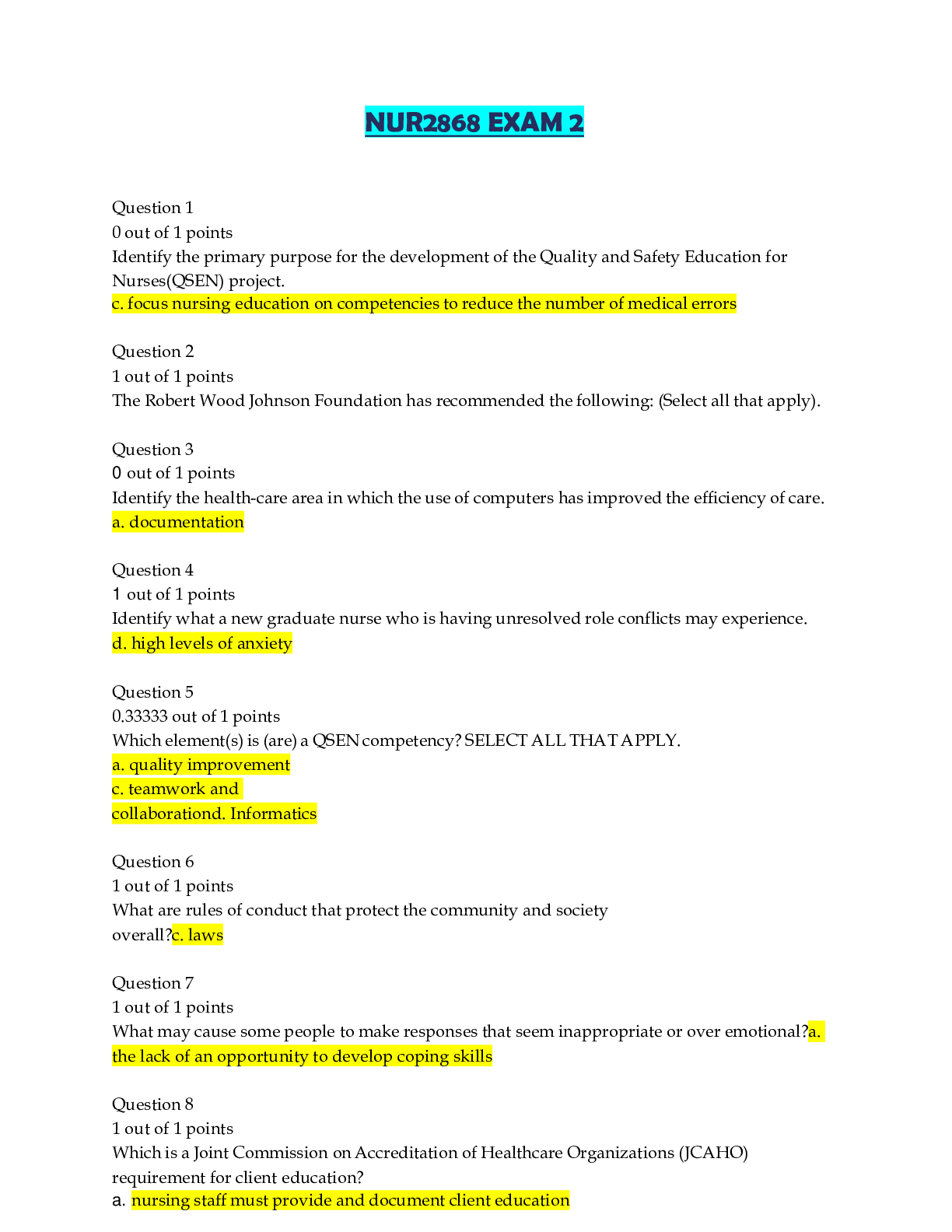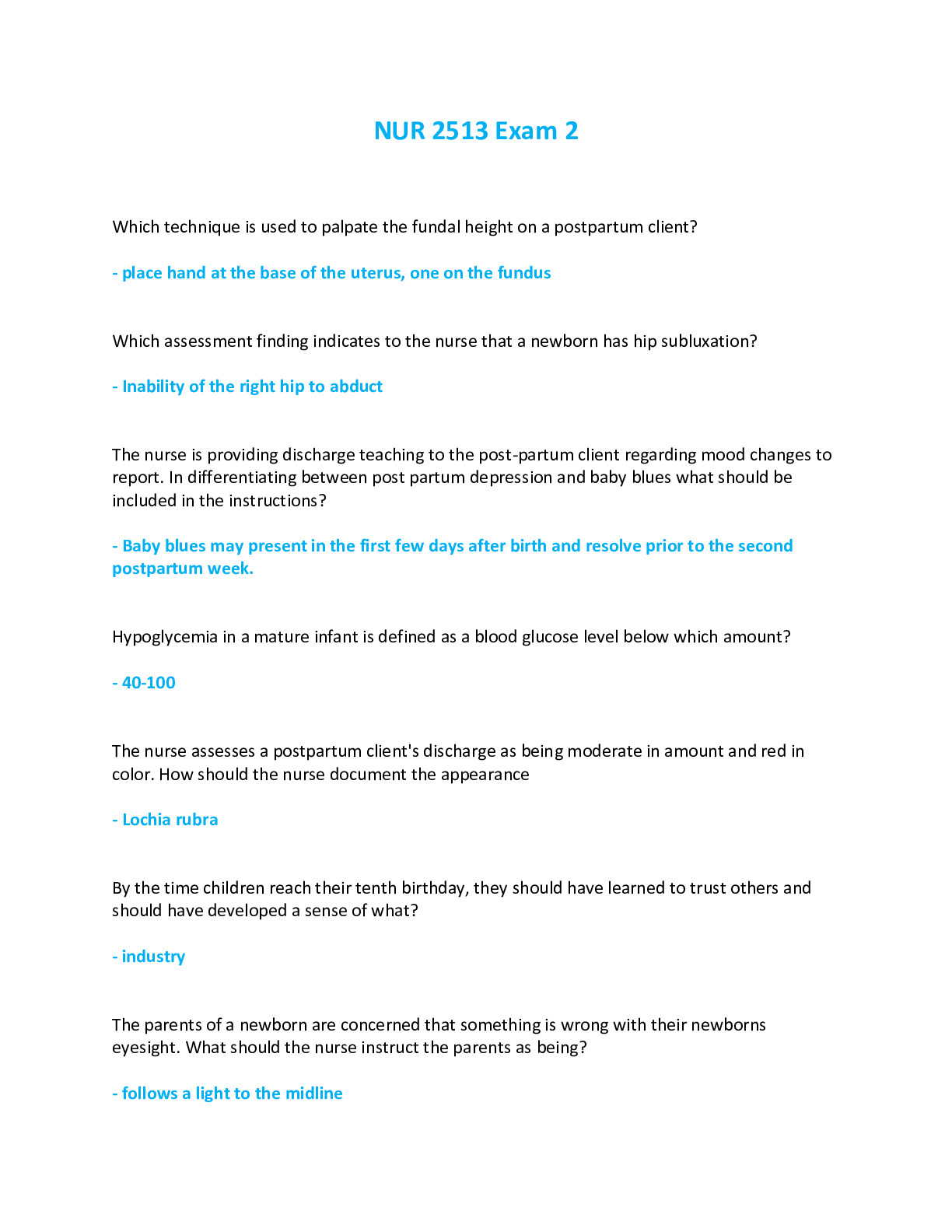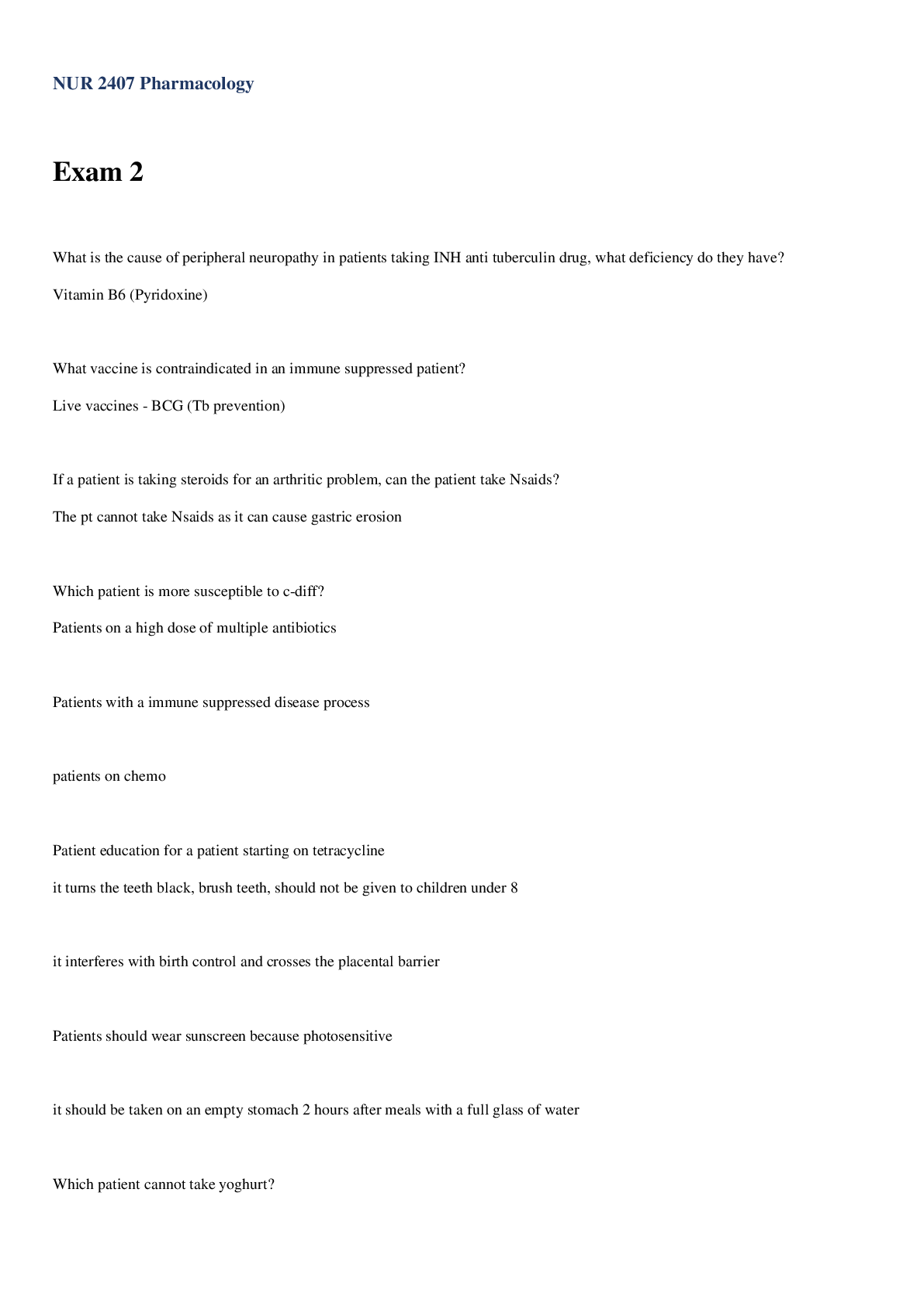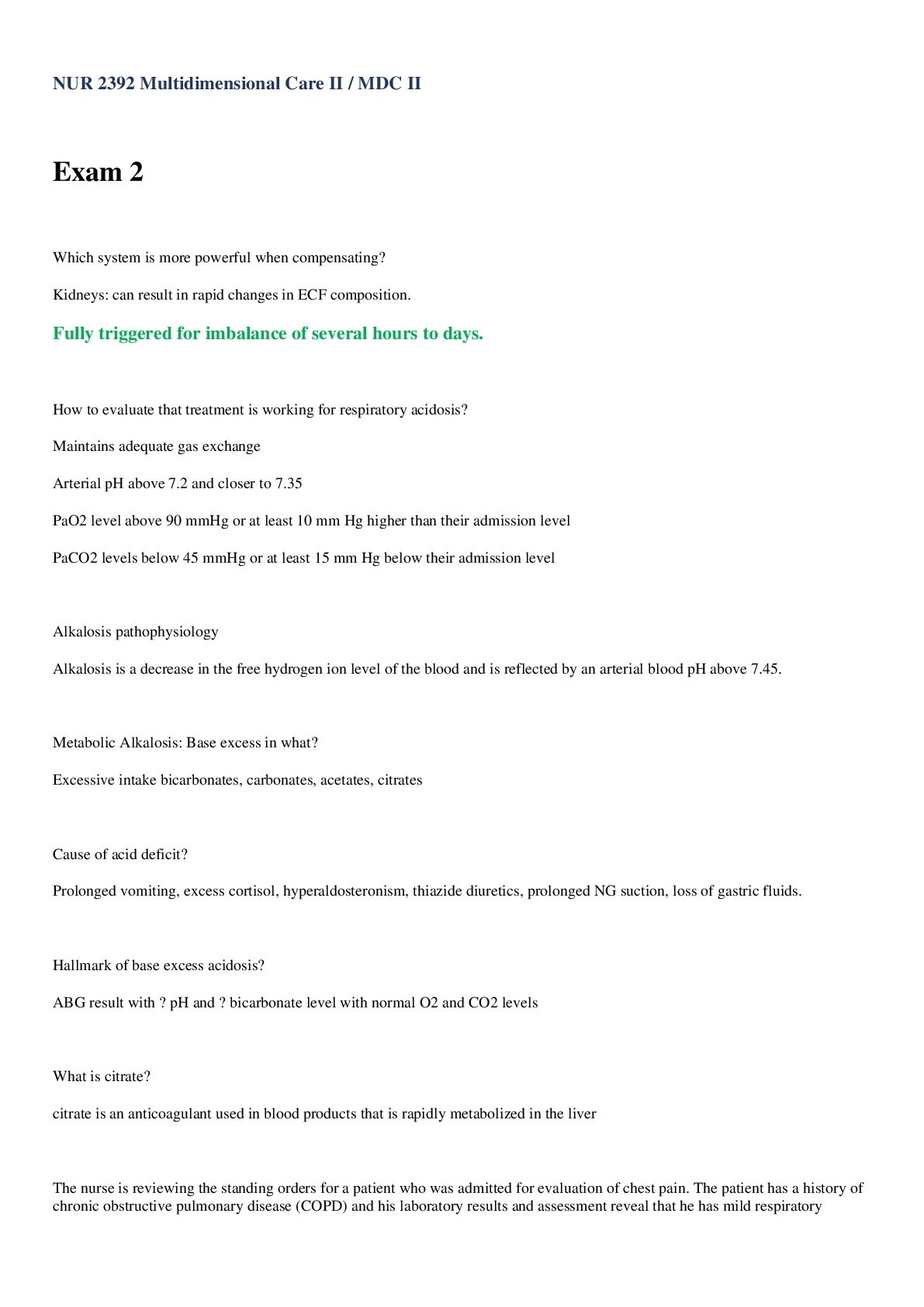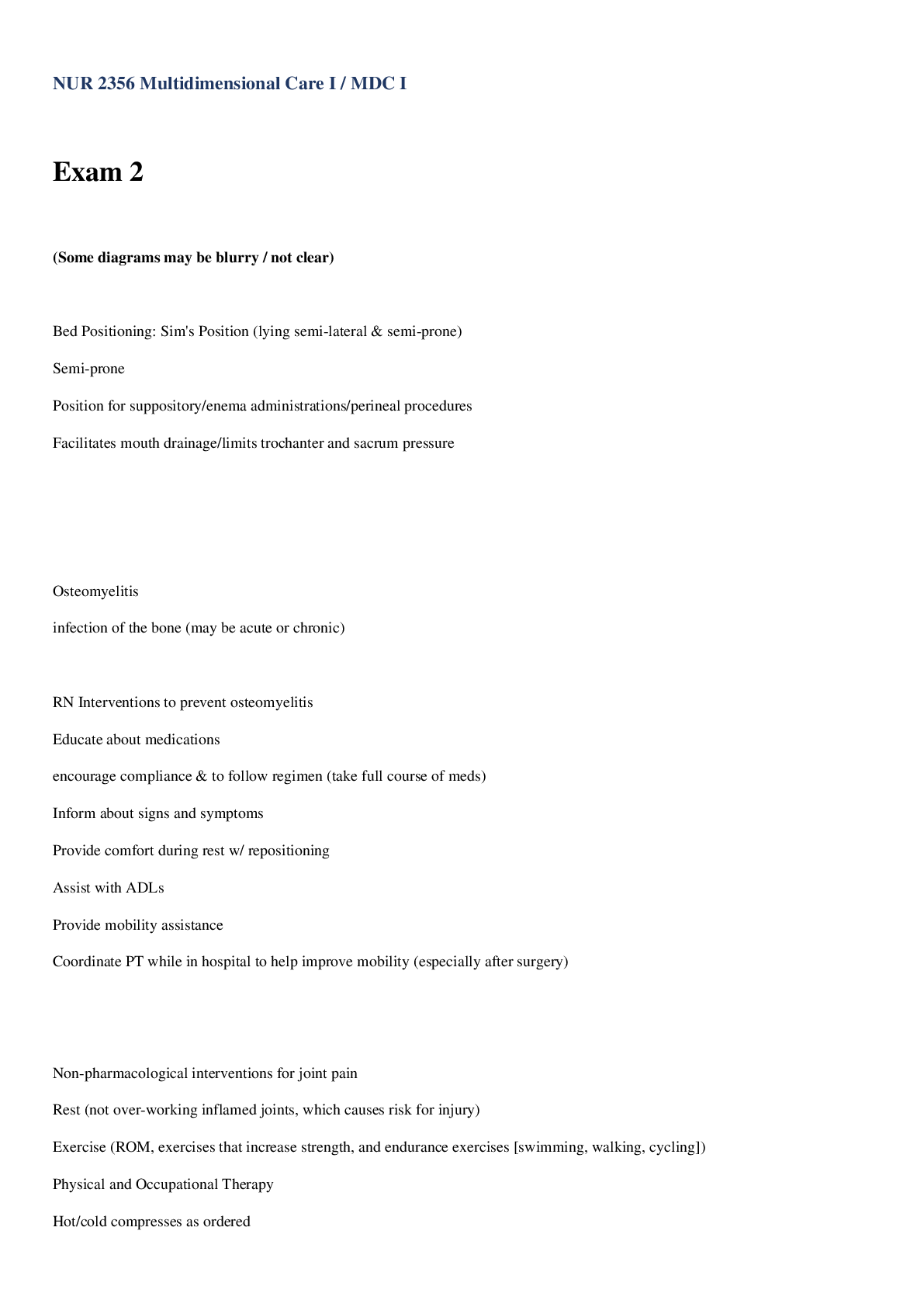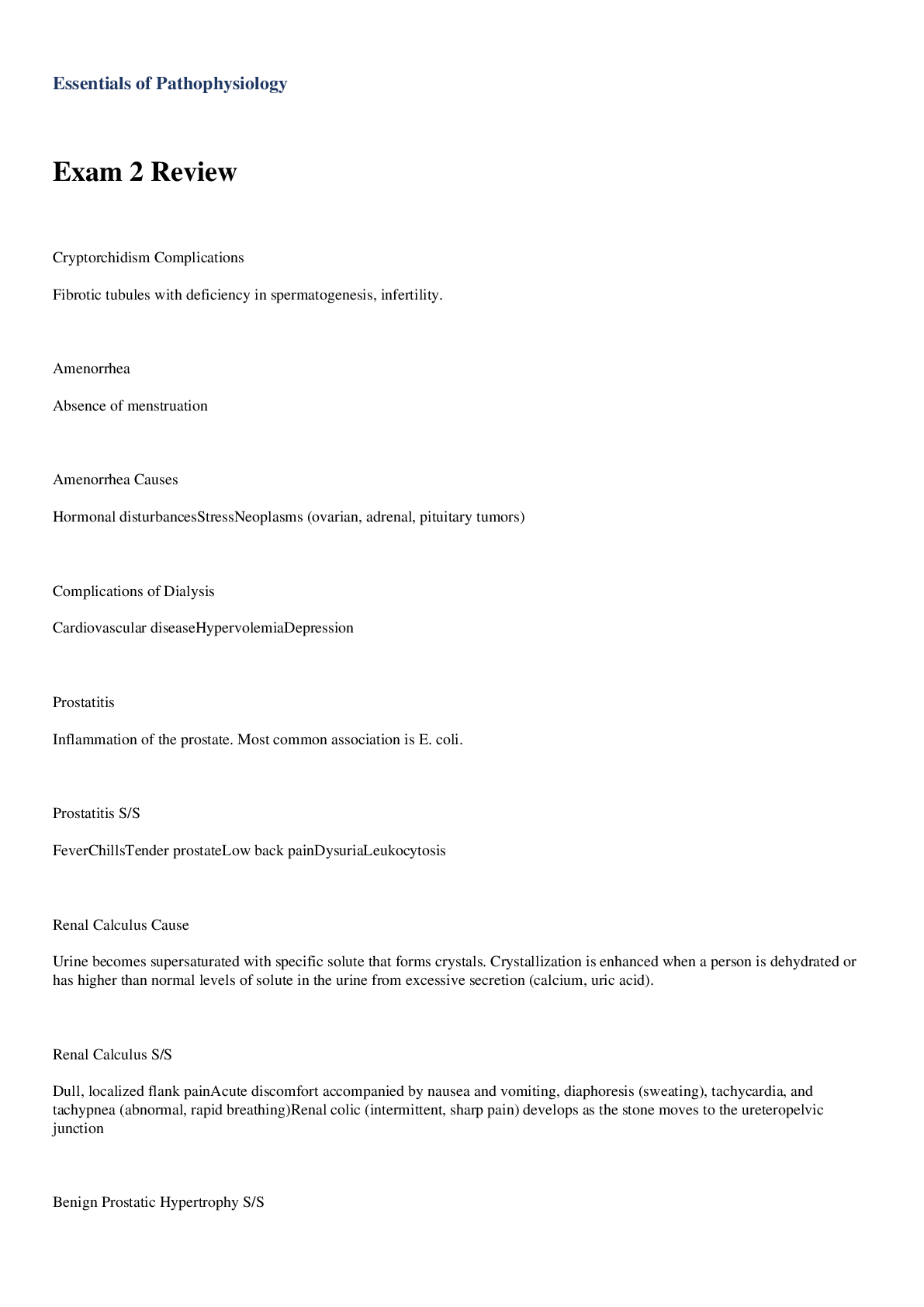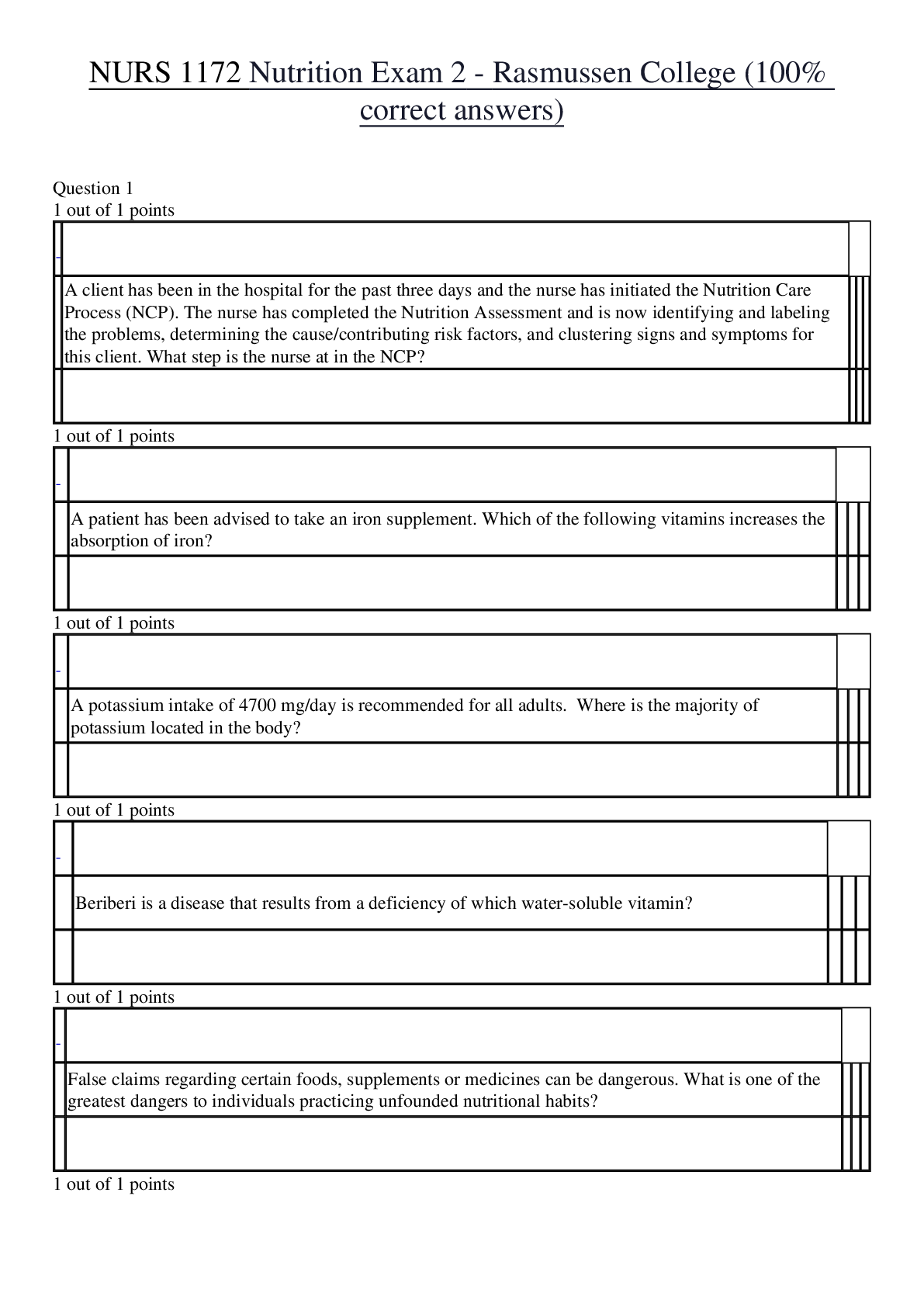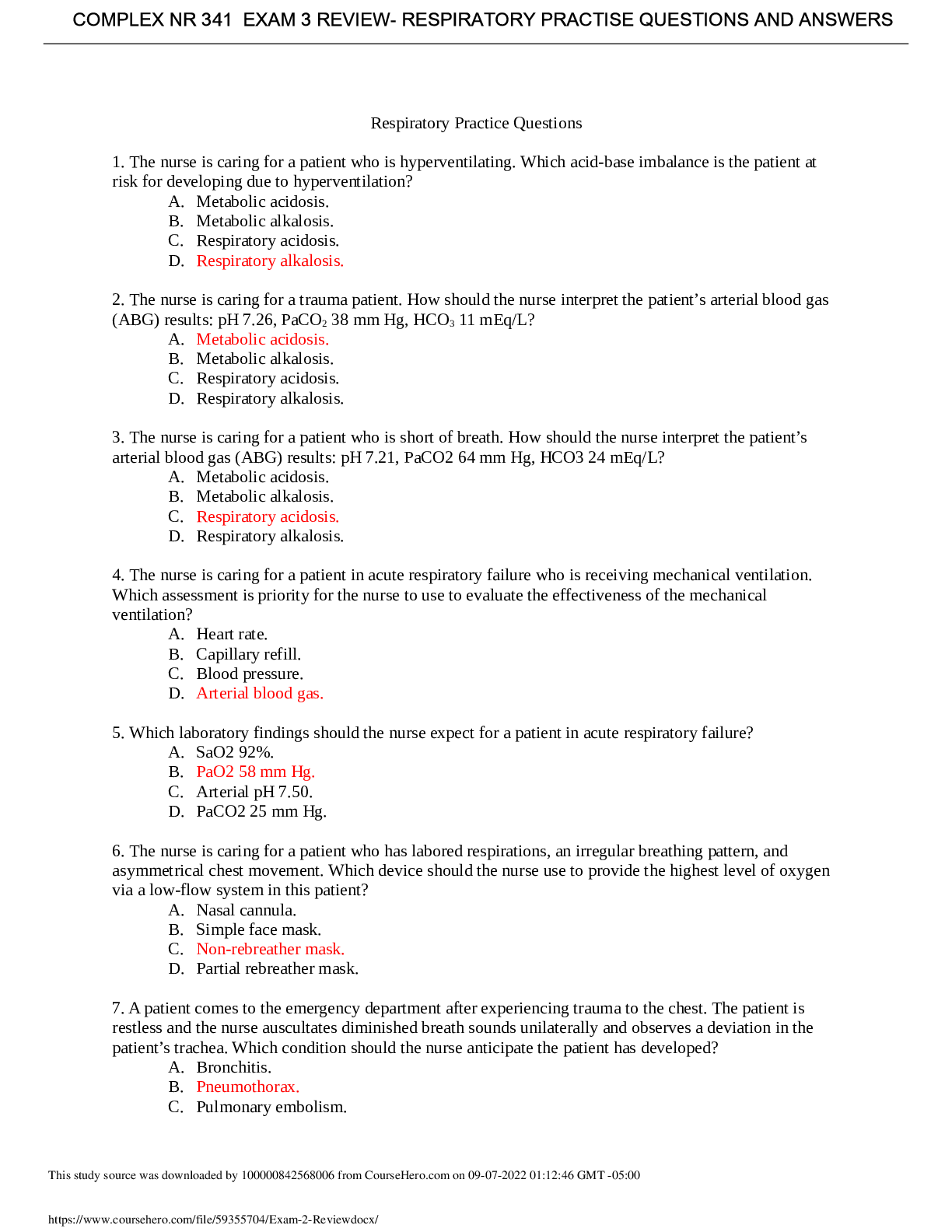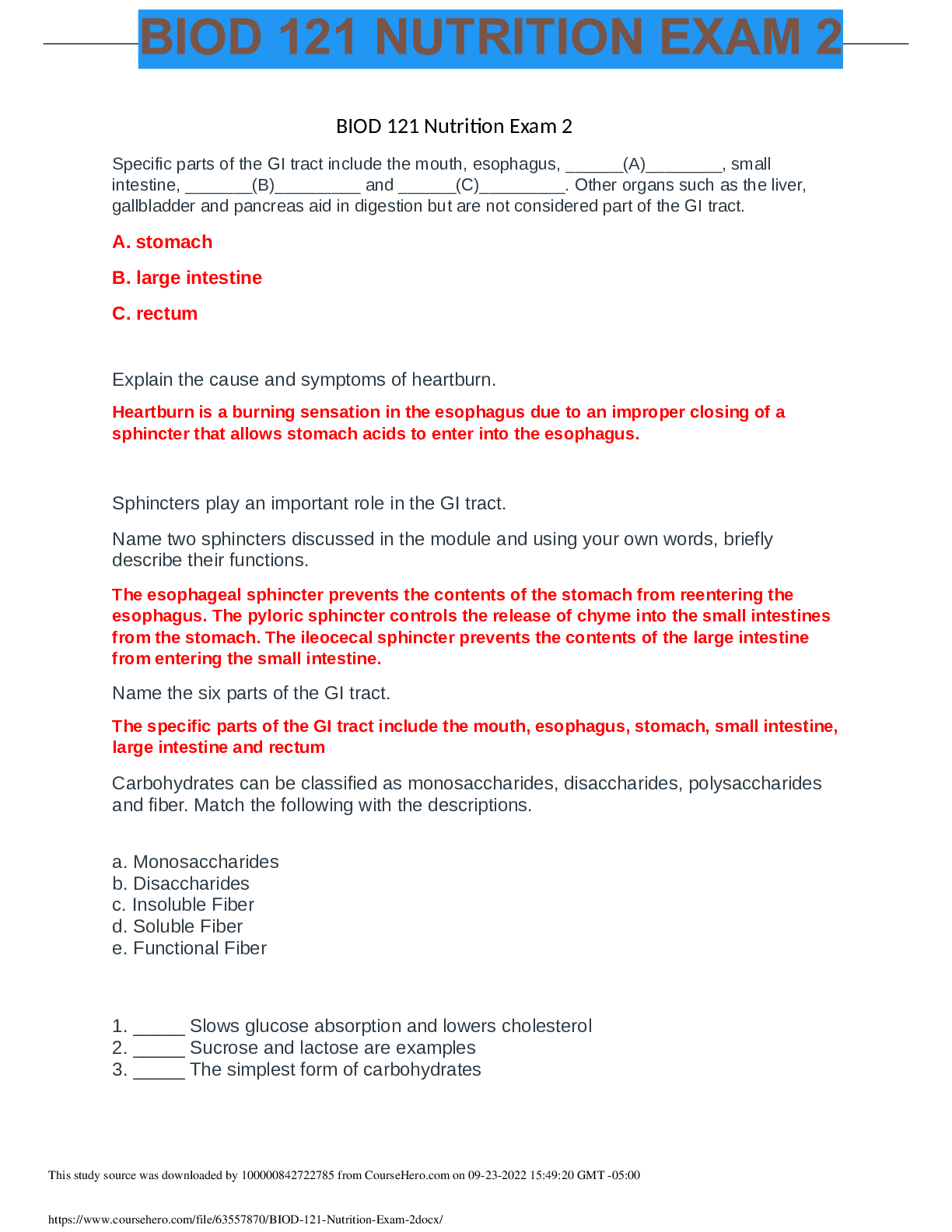NUR 352 Exam 2 Latest updated with complete solution
Document Content and Description Below
(10 questions on neuro, 8 questions on skincare, 5-8 on safety, 5-8 on falls, 2 on HEENT, 3 on Musculoskeletal, 10 on Medication Safety) What must be met before physical and psychological needs acc... ording to Maslow's hierarchy of needs? - ANSWER oxygen, proper nutrition, Most common injuries to toddlers, infants & preschoolers. - ANSWER poisoning, choking, riding unrestrained in motor vehicle, drowning, head trauma, Most common injuries for school-aged kids - ANSWER head injuries, bicycle accidents, sports injuries, not wearing a seat belt Most common injuries for adolescent - ANSWER risk taking behaviors, alcohol, drugs, drowning, motor vehicle accidents, suicide Most common injuries for an adult - ANSWER lifestyle habits (smoking= lung problems & nicotine's effect on the heart, stress= headaches & GI problems), childbirth, stress, inadequate nutrition, excessive alcohol intake, substance abuse Most common injuries for an older adult - ANSWER falls (wandering), poly pharmacy, What are two individual risk factors to safety? - ANSWER impaired mobility (paralysis & muscle weakness), lack of safety awareness The Joint Commission's standards for National Patient Safety in Hospitals. - ANSWER (1) patient identification (2) improve staff communication (3) Use medicines safely (4) Use alarms safely (5) Prevent Infection (6) Prevent mistakes in surgery What are some of the serious reportable events? - ANSWER (1) surgical events (adverse) (2) patient protection events (ex: infant discharged to wrong people) (3) care-management events (pressure ulcers, medication errors) (4) product or device events (5) environmental events (6) criminal events (impersonation of doctor) What cultivates a culture of safety in the hospital setting? - ANSWER focusing on the root cause of an event, and not the individual's mistake When does a fall risk assessment need to be completed? - ANSWER admission, following a change in condition, after a fall, & when transferred Who is at risk for falls? (Hendrich II Fall Risk Assessment) - ANSWER Confusion/Disorientation/Impulsivity= 4 Symptomatic Depression= 2 Altered Elimination= 1 Dizziness/Vertigo= 1 Gender (male)= 1 any administered anticonvulsants= 2 any administered benzodiazepines= 1 Get up & go assessment score above 5= fall risk! Get Up & Go Assessment criteria - ANSWER "rising from a chair" 0= ability to rise in one single movement 1= pushes up successfully in one attempt 3= multiple attempts but successful 4= unable to rise w assistance Besides the Hendrich fall assessment, what are other risk factors for falling? - ANSWER being over 65, history of falling, reduced vision, orthostatic hypertension, lower-extremity weakness, gait/balance problems, urinary incontinence, improper use of walking aids, and effects of medications What are some Fall Prevention Strategies? - ANSWER have bed in low-locked position, non-slip footwear, orient to surroundings, have call light nearby, establish their mobility restrictions, remove supplies/clutter, well light/clear path to bathroom, clean up spills promptly, arrange personal items within arms reach Braden Scale Categories - ANSWER (1) Sensory Perception (2) Moisture (3) Activity (4) Mobility (5) Nutrition (6) Friction & Shear Braden Scale Specific Ratings - ANSWER (1) Sensory Perception: 4= no impairment & 1= completely limited (2) Moisture: 4= rarely moist & 1= always moist (3) Activity: 4=walks frequently & 1= bedfast (4) Mobility: 4= no limitation & 1= completely immobile (5) Nutrition: 4=excellent & 1= very poor (6) Friction & Shear: 3= no apparent problem & 1= problem What is the Braden score used for? - ANSWER establishing who is a pressure sore risk! (or possibility of skin breakdown in a patient) Results of Braden Score - ANSWER <9: VERY high risk 10-12: High Risk 13-14; Moderate Risk 15-18: Low Risk 19-23: No Risk Stage 1 pressure sore - ANSWER intact skin with non-blanchable redness of localized area Stage 2 pressure sore - ANSWER partial thickness loss of dermis & presents as a shallow, open ulcer with red/pink wound bed Stage 3 pressure sore - ANSWER A full thickness skin is lost exposing the subcutaneous tissue, it presents as a deep crater without exposing bones, tendons or muscles Stage 4 pressure sore - ANSWER Full thickness ulcer. Muscle and/or bone can be seen. Infection and necrosis MAY be present. Unstageable pressure sore - ANSWER Full thickness tissue loss in which actual depth of the ulcer is completely obscured by slough (yellow, tan, gray, green, or brown) Suspected Deep Tissue Injury (DTI) - ANSWER Purple or maroon localized area of discolored intact skin or blood-filled blister due to damage of underlying soft tissue from pressure and/or shear. [Show More]
Last updated: 1 year ago
Preview 1 out of 12 pages
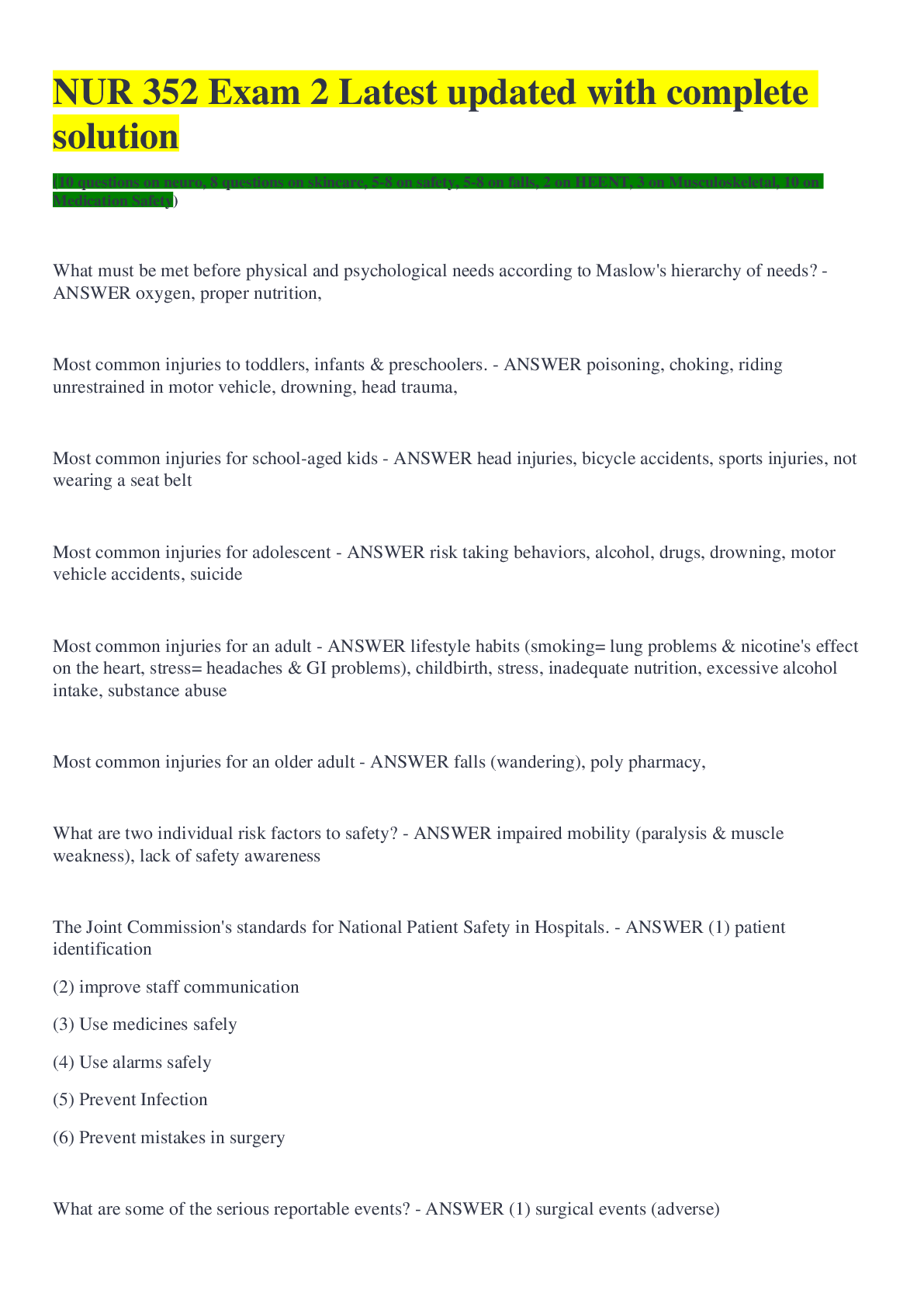
Reviews( 0 )
Document information
Connected school, study & course
About the document
Uploaded On
Sep 26, 2022
Number of pages
12
Written in
Additional information
This document has been written for:
Uploaded
Sep 26, 2022
Downloads
0
Views
26

